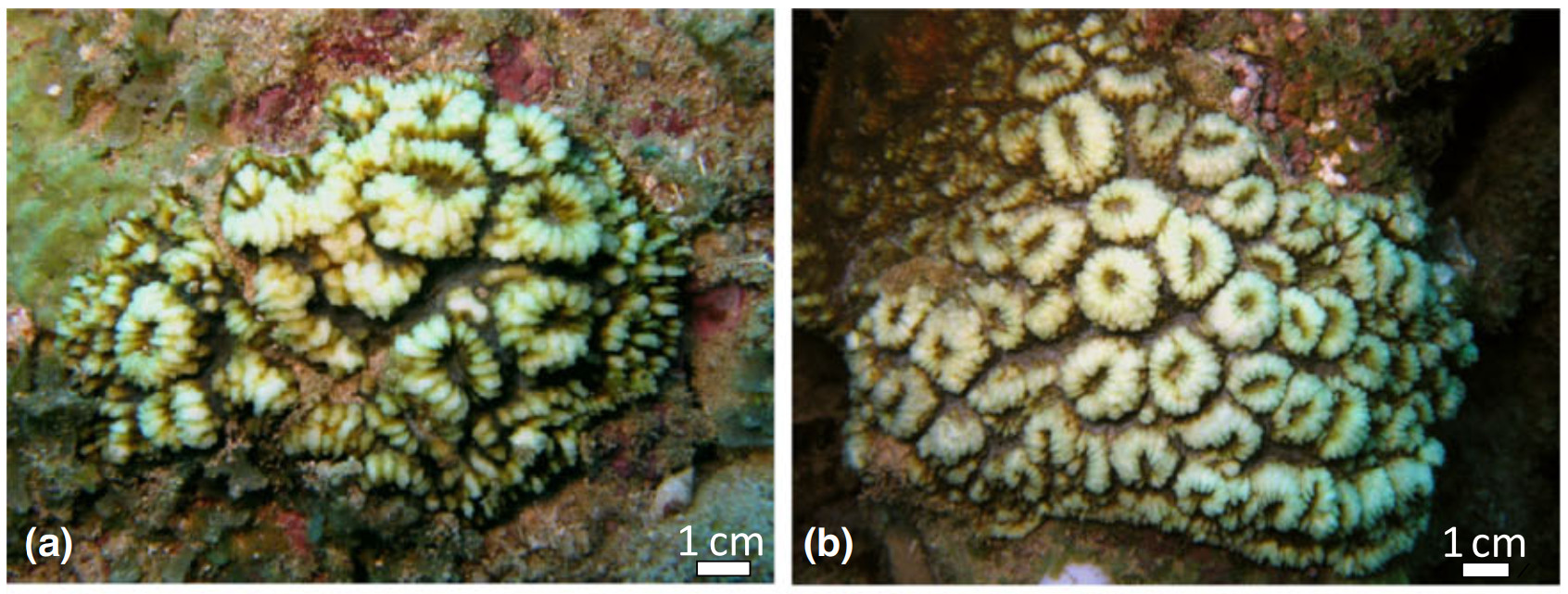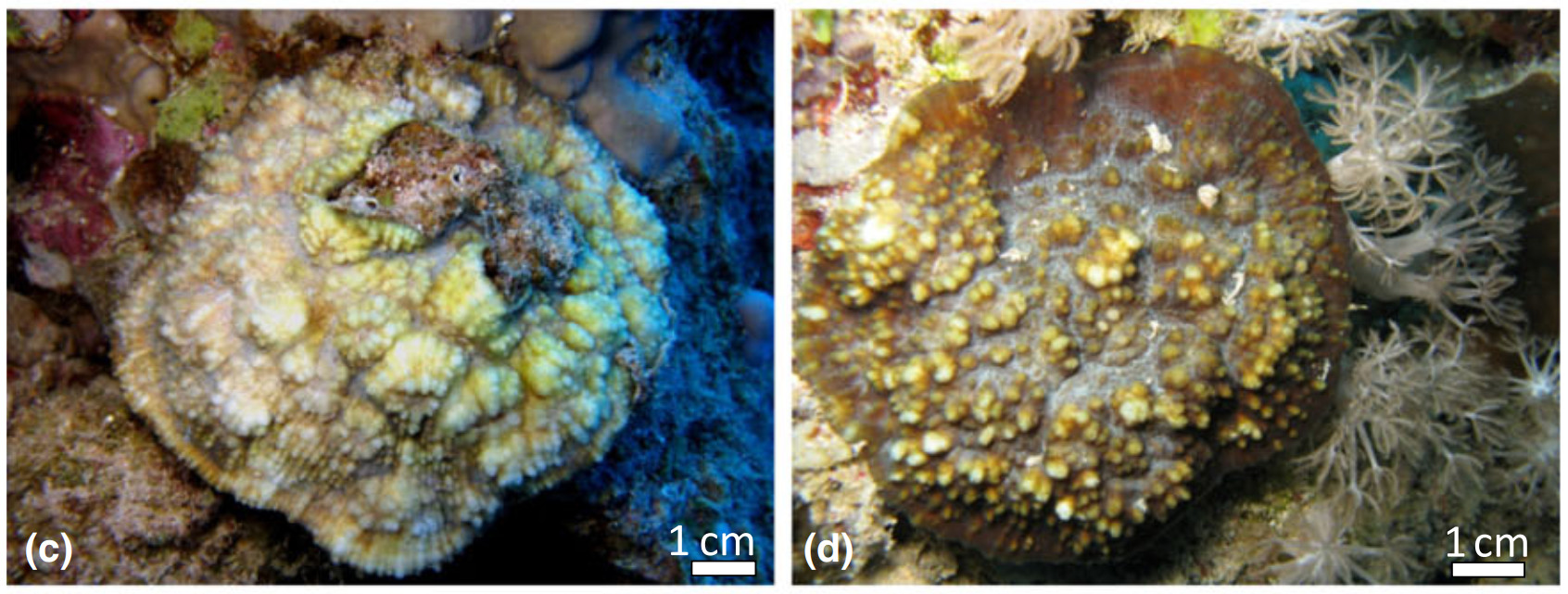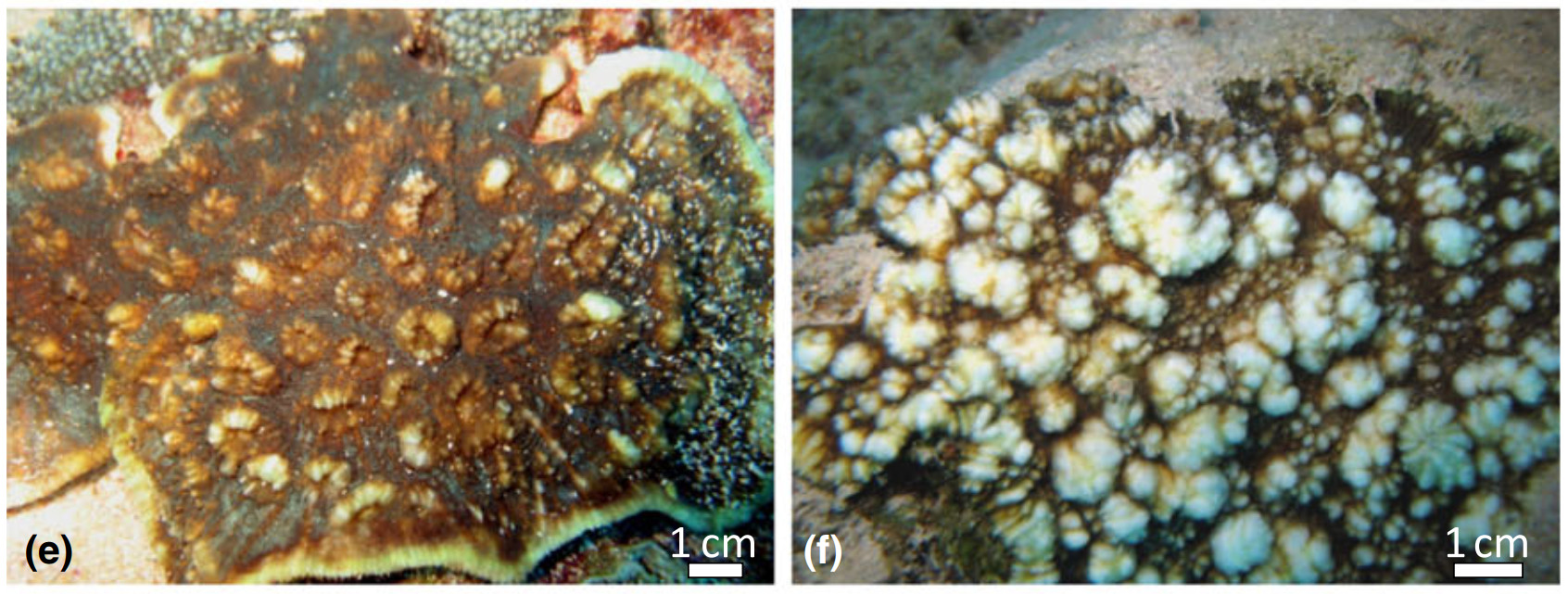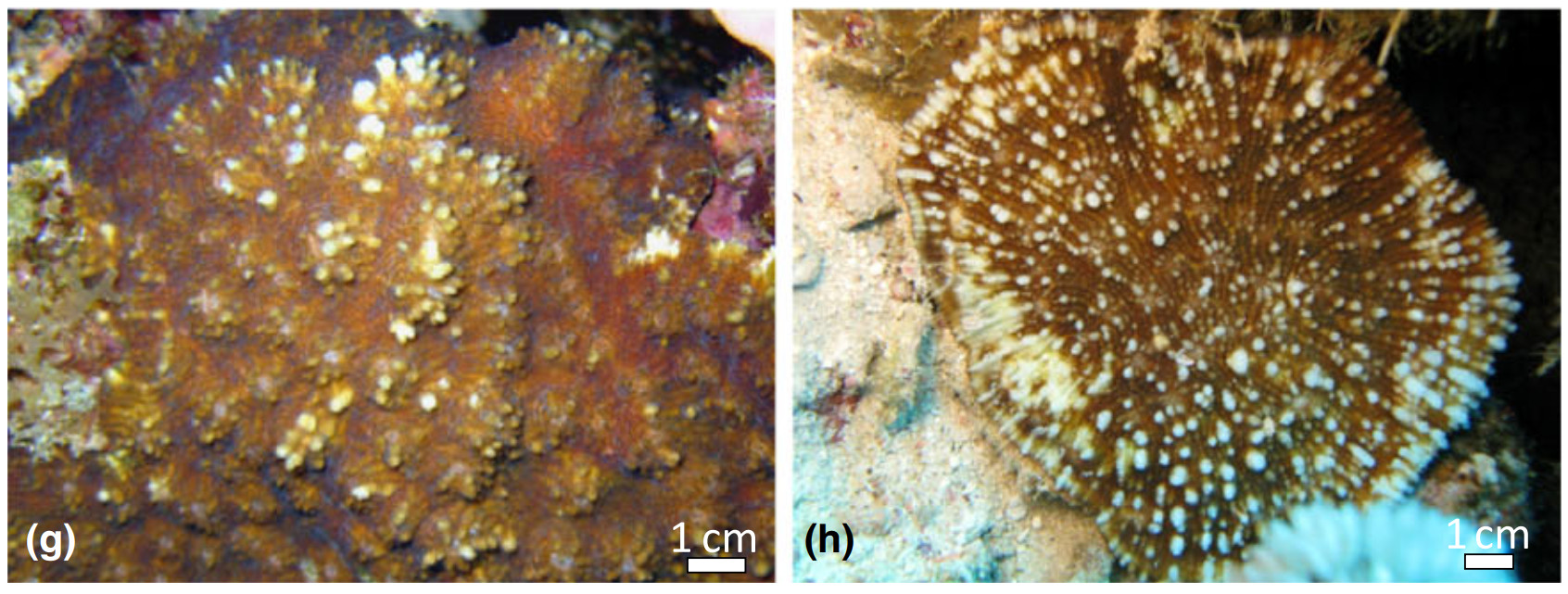
Paraechinophyllia variabilis, illustrating E. orpheensis-like phenotype. Both from Mayotte, a=holotype, b=paratype. Credit: Arrigoni et al. 2018
“Speciation is not always accompanied by morphological change, and the identification of cryptic taxa has challenged taxonomists and naturalists since the 18th century.”
These are the ominous words that appear in a challenging new study of chalice corals. The authors, which includes several of the leading experts on stony coral morphology and genetics, have rearranged our understanding of this difficult group yet again, reclassifying multiple species into new genera, as well as recognizing an entirely new genus that had been completely overlooked until now.
The discovery of Paraechinophyllia variabilis is just the latest of several major reworkings of the Merulinidae—the diverse group of corals home to most of the Indo-Pacific brains and scolys and chalices. By sequencing a handful of genes from a large number of Echinophyllia-like specimens collected from all across this region, these researchers observed a unique and previously unknown genetic lineage centered on the Western Indian Ocean.
Morphologically, these specimens were highly variable in their colony shape and had originally been identified as belonging to two different species, E. aspera and E. orpheensis. Even with close inspection of their micromorphology and microstructure, examining every minute detail of how the skeleton is constructed, no obvious differences were discovered. This might naturally lead one into thinking that these are really just all the same species, but the DNA argues otherwise, suggesting that these seemingly identical corals split from one another more than 20 million years ago!

Paraechinophyllia variabilis, from Saudi Arabia. Note the E. aspera-like appearance. Credit: Arrigoni et al. 2018
To put this great age into perspective, this is around the same time period that major reef fish groups like the Amphiprion anemonefishes and Acanthurus surgeonfishes and “Centropyge” angelfishes first began to speciate into their many forms. And, yet, for these unassuming chalice corals, 20 million years of existence has brought no discernible differences. Paraechinophyllia, along with Echinophyllia aspera and E. orpheensis, occur side by side in the Western Indian Ocean, appearing together even in the same habitats.
Now, it’s important to point out that their present similarities do not necessarily imply that they have always been like this. It’s possible that this aspera-like shape has been evolutionarily conserved ever since these separate lineages diverged from their last shared common ancestor 20 million years ago, or, more likely, this is just an especially convincing example of convergent evolution, wherein distant relatives independently arrive upon a shared morphology.
The Western Indian Ocean seems to have been a real hotbed of speciation during the Miocene, with a number of unique lineages presently restricted to this region. Among corals, there are a number of small and generally unfamiliar genera— Anomastraea, Coscinaraea, Craterastrea, Ctenella, Gyrosmilia, Horastrea, Sclerophyllia— none of which ever find their way into aquariums. Of course, there are many reef fishes that show this same biogeographical trend, from the Gem Tang to Tiger Angelfish. What all of these disparate groups have in common is that they tend to be quite species-poor, as if the Western Indian Ocean is acting as a present-day refugium for lineages which failed to successfully compete elsewhere in the Indo-Pacific. For most of the endemic corals listed above, the preferred habitat is silted, low-quality reefs, where they tend to occur in low abundance.

Paraechinophyllia variabilis, from Yemen (left) and Saudi Arabia (right). Credit: Arrigoni et al. 2018
Unfortunately, the tremendous variability seen in Paraechinophyllia makes it all but impossible to identify specimens without genetic confirmation. For example, the holotype has the tall corallites characteristic of E. orpheensis, while the paratypes appear noticeably flatter, all but indistinguishable from E. aspera. And adding to what is already a very confusing situation, this study goes on to mention that these two Echinophyllia species are themselves so variable morphologically and homgenous in their genetics that they likely represent a single heterogenous species. Good grief!
It was also necessary to swap a couple other species between the closely related genera Echinophyllia and Oxypora, which for the first time allows these two groups to be readily diagnosed both morphologically and genetically. And so the erstwhile Oxypora glabra has moved shop to become an Echinophyllia, whilst its former brother in arms, E. echinata, has defected to Oxypora. Structural differences are relatively minor. In the newly defined Oxypora: 1) The center of the corallites (the columella) appears less spongy (having but a single trabecular thread). 2) Paliform lobes (present along the inner edge of the septae) are absent.
Have we finally reached the end of the Merulindae’s meandering taxonomic journey, or are there more surprises to come?

Paraechinophyllia variabilis, from Saudi Arabia. Note that this coral is also known from Madagascar and presumably occurs elsewhere in the WIO (Kenya to South Africa, Seychelles, the Mascarenes). Credit: Arrigoni et al. 2018
- Arrigoni, R., Berumen, M.L., Stolarski, J., Terraneo, T.I., and Benzoni, F. (2018) Uncovering hidden coral diversity: a new cryptic lobophylliid scleractinian from the Indian Ocean. Cladistics. https://doi.org/10.1111/cla.12346










0 Comments